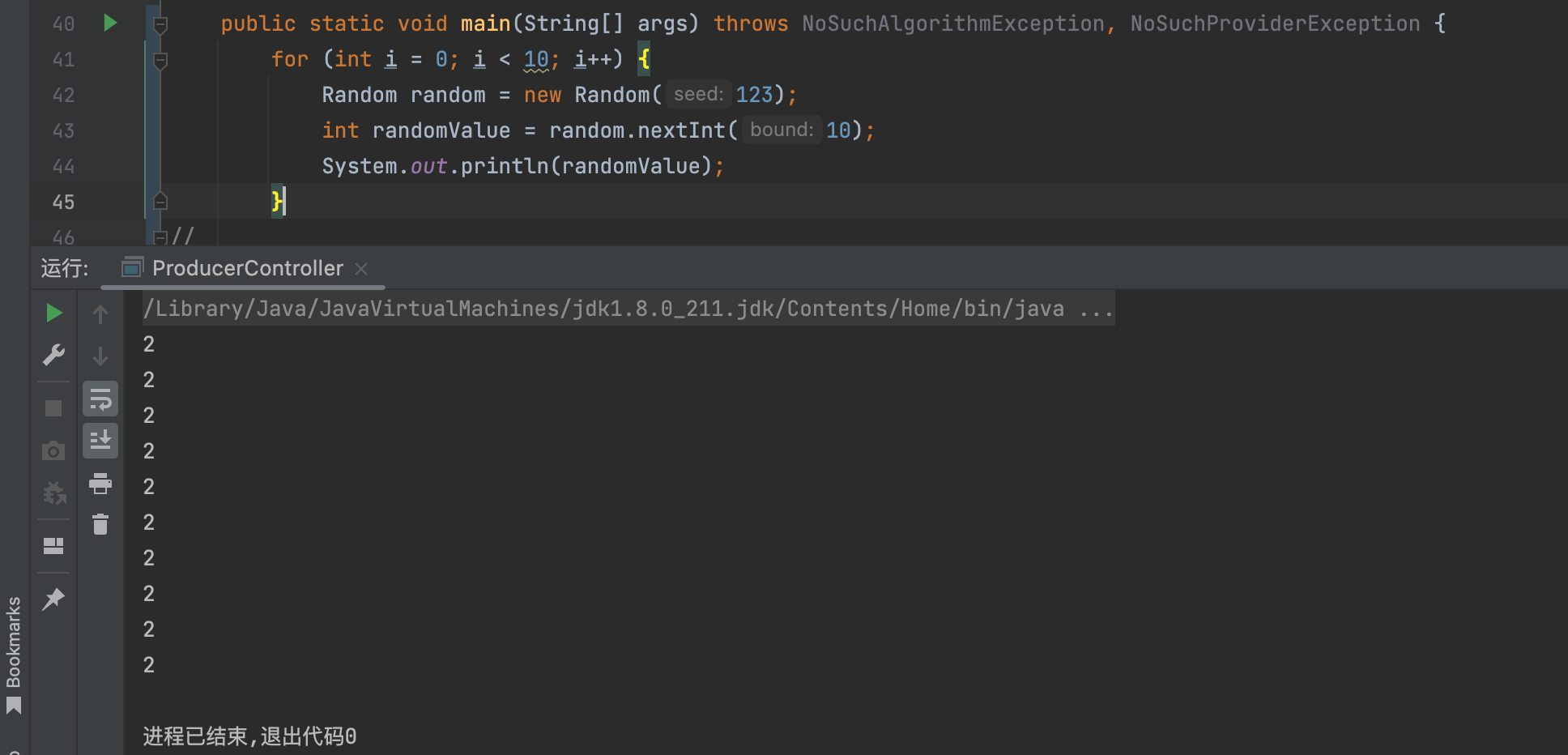-
SecureRandom那些事|真伪随机数
前面的几篇文章,介绍了随机数的几种生成方式,那么什么是伪随机数呢?
所谓伪随机数,是指只要给定⼀个初始的种⼦,产⽣的随机数序列是完全⼀样的。
for (int i = 0; i < 10; i++) { Random random = new Random(123); int randomValue = random.nextInt(10); System.out.println(randomValue); }- 1
- 2
- 3
- 4
- 5

当我们初始化Random不给定种子的时候,会默认给定当前的时间作为种子。/** * Creates a new random number generator. This constructor sets * the seed of the random number generator to a value very likely * to be distinct from any other invocation of this constructor. */ public Random() { this(seedUniquifier() ^ System.nanoTime()); }- 1
- 2
- 3
- 4
- 5
- 6
- 7
- 8
跟踪
* @return the current value of the running Java Virtual Machine's * high-resolution time source, in nanoseconds * @since 1.5 */ public static native long nanoTime();- 1
- 2
- 3
- 4
- 5
那么,什么是真随机数呢?
真正的真随机数只能通过量⼦⼒学原理来获取,⽽我们想要的是⼀个不可预测的安全的随机
数,SecureRandom就是⽤来创建安全的随机数的:SecureRandom sr = new SecureRandom(); System.out.println(sr.nextInt(100));- 1
- 2
SecureRandom⽆法指定种⼦,它使⽤RNG(random number generator)算法。JDK的SecureRandom实际上有多种不同的底层实现,有的使⽤安全随机种⼦加上伪随机数算法来产⽣安全的随机数,有的使⽤真正的随机数⽣成器。
实际使⽤的时候,可以优先获取⾼强度的安全随机数⽣成器,如果没有提供,再使⽤普通等级的安全随机数⽣成器:
import java.util.Arrays; import java.security.SecureRandom; import java.security.NoSuchAlgorithmException; public class Main { public static void main(String[] args) { SecureRandom sr = null; try { // 获取⾼强度安全随机数⽣成器 sr = SecureRandom.getInstanceStrong(); } catch (NoSuchAlgorithmException e) { // 获取普通的安全随机数⽣成器 sr = new SecureRandom(); } }- 1
- 2
- 3
- 4
- 5
- 6
- 7
- 8
- 9
- 10
- 11
- 12
- 13
- 14
SecureRandom的安全性是通过操作系统提供的安全的随机种⼦来⽣成随机数。
这个种⼦是通过CPU的热噪声、读写磁盘的字节、⽹络流量等各种随机事件产⽣的“熵”。
在密码学中,安全的随机数⾮常重要。如果使⽤不安全的伪随机数,所有加密体系都将被攻破。
因此,时刻牢记必须使⽤SecureRandom来产⽣安全的随机数。
-
相关阅读:
机器学习/深度学习 模型修正能力
【23种设计模式】组合模式【⭐】
PyQt5开发笔记:1.环境搭建与界面美化
Java进阶——IO 流
Java错题归纳day16
数据结构:3.3.4遍历应用例子
linux之应用编程回顾总结
关于java语言中的final关键字
springboot使用Mybatis中兼容多数据源的databaseId(databaseIdProvider)的简单使用方法
07、Python -- 序列相关函数与封包解包
- 原文地址:https://blog.csdn.net/CSDN_SAVIOR/article/details/125622150